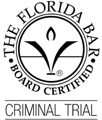Federal courts use a set of guidelines and a scoring system to determine an appropriate range of sentencing for each convicted defendant. The system is intended to produce an ultimate punishment based on the precise circumstances of the crime and the offender’s personal history. The State of Florida also adopted a similar system in which it placed various criminal offenses into one of ten categories of severity with a point system like the one used by federal courts.
At Stechschulte Nell, Attorneys at Law in Tampa, we want everyone to understand how these sentencing systems work and how they might apply to a case in which you or a loved one is involved. Each of the sentencing guideline systems is complex and requires experience and even some training to fully grasp how it operates. We hope this general overview is helpful and we invite you to contact us if you have further questions about a particular case.
Why Have Sentencing Guidelines for White Collar Crime?
Before sentencing guidelines were introduced for use in the court system, the disparity between sentences imposed on people of different social or economic groups was remarkably large. It was not unusual for a well-connected, financially well-off defendant to receive a lighter sentence than a poor person with no influence even when they committed comparable crimes.
Wide sentence discrepancies not only existed between defendants. The sentences imposed by different judges in different jurisdictions for the same offense also varied substantially. Legislators on both the state and federal levels decided to mandate a more uniform sentencing process by establishing guidelines that judges need to follow or state in writing why they deviated.
Unfortunately, the system often results in uniformly unfair sentences being imposed in many cases.
How Do the Guidelines Work?
The federal and Florida sentencing guidelines use different terminology but follow the same sort of process. To determine an applicable sentencing range, the criminal statute the defendant is convicted of violating has a corresponding base offense level associated with it. With each factor identified by the guideline manual and applied to the facts of each case, levels are either added or deducted for various aggravating or mitigating facts in the case that ultimately determine the final sentencing range. White collar offenders typically fall within a base level between 6 and 8.
In 2005, the U.S. Supreme Court’s ruled in United States v. Booker, 543 U.S. 220 (2005), that mandatory sentencing guidelines violated the defendant’s constitutional rights. Since then, the guidelines have been merely “advisory,” meaning a judge may depart from the guidelines if they clearly state the grounds for doing so and their departure is not “an abuse of discretion.”
The federal sentencing guidelines are intended to apply a predictable sentencing structure across the nation through a formula emphasizing two primary factors:
- the conduct associated with the offense (the criminal conduct violating the statute which determines the “offense level,”
- the defendant’s criminal history.
The two factors, offense level, and criminal history are placed o axes in a chart. Using the chart’s scales, when the defendant’s offense level and criminal history category intersect in the corresponding zone, the sentencing range is identified.
Each guilty defendant’s criminal conduct (offense level) is scored by considering the following matters:
- the amount of money involved (if $5,000 increase offense level by 2; over $120k increases the offense level by 10, etc.)
- the number of victims affected (10 or more increase offense level by 2, 50 or more increase by 4, etc.)
- defendant’s role in the offense (minor figure deducts offense level, leader or manager increases)
- other crimes also being sentenced (same or similar get combined, crimes of different nature get their own calculation and the judge then uses a formula to form the final sentence range)
- defendant’s acceptance of responsibility by a guilty plea earns them a decrease,
Once all factors are considered to determine the offense level, then the defendant’s criminal history category is arrived at by reviewing prior convictions and assessing points based on the nature of the offense and the length of the sentence. The total points assessed to determine the Criminal History Category, I through VI, range from less serious offenses to the most serious offenses.
At the end of the process, all factors taken together will lead to a sentencing range that fits the individual defendant’s circumstance.
Learn More> Federal Sentencing Calculation
Federal Sentencing Guidelines Are Not Binding but Are Presumed to Be Reasonable
The law allows the federal district court judge to depart from the guideline sentence identified for a defendant. However, the judge must consult and consider the guidelines in arriving at a sentence. The defendant can appeal the sentence if a requested downward departure is denied or if an upward departure is imposed over their objection. The appellate court will review the sentence to determine if it was “reasonable,” but if the judge states reasonable grounds, the appellate court will not reverse the sentence merely because it would have imposed a different sentence.
Insist on Experienced Tampa Federal White Collar Defense Counsel
Every federal criminal defendant needs to be represented by a criminal defense lawyer who thoroughly understands the sentencing guidelines’ rules, procedures, laws, and exceptions. The federal sentencing guidelines are extremely detailed and ensuring that each client is given the benefit of every downward departure to which they are entitled is an absolute priority at Stechschulte Nell, Attorneys at Law in Tampa.
The ability to recognize and present well-grounded objections to upward departures is an equally indispensable skill needed by federal criminal defense lawyers.
Every defendant’s life is unique; and their individual experiences, health, challenges, family relationships, past good conduct, substance use disorders, disabilities, addictions, employment history, community involvement, and military service should be highlighted for recognition by the court when determining a proper sentence.
The federal sentencing guidelines are a complex set of rules that cross-reference other rules and statutes, each of which has been the subject of prior court decisions that color how the rules are to be applied.
If you are facing federal prosecution for a white-collar crime, contact Tampa federal defense lawyers with expertise in the sentencing guidelines. Don’t find out that your lawyer made a mistake when it’s too late. Call Tampa’s experienced federal criminal defense lawyers at Stechschulte Nell today; 813-280-1244.









